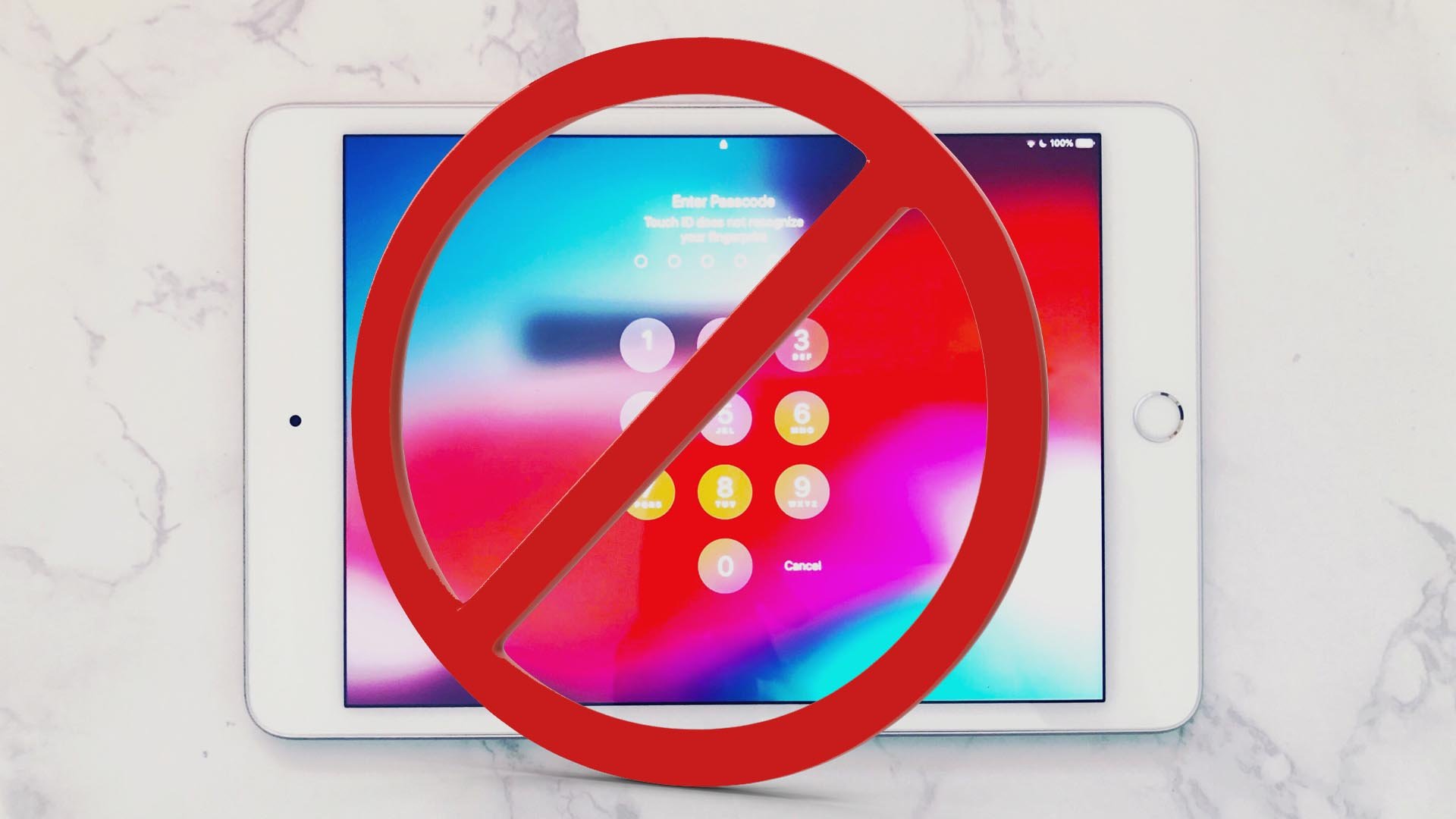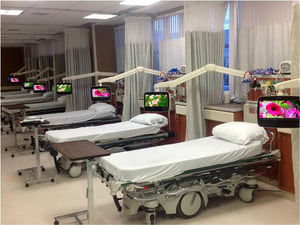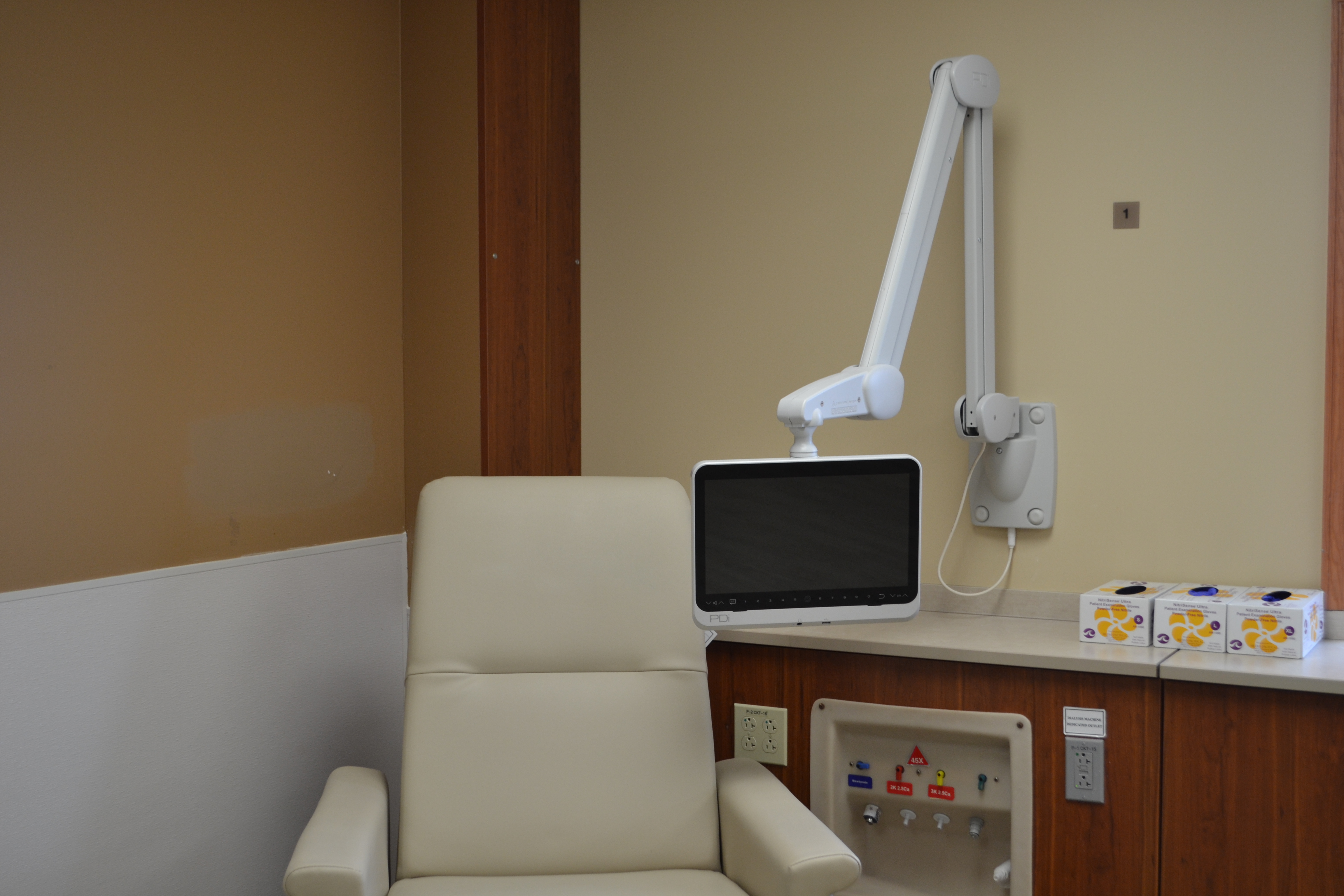How Tablets Can Improve Patient Engagement
Part 2 of the "Different Angles of Patient Engagement" Blog Series Previously, we discussed the experience of a large-screen footwall patient TV....
3 min read
 Lynn Schutte
:
December 6, 2022
Lynn Schutte
:
December 6, 2022

Updated December 10, 2024 by Cat Saettel
Patients can easily feel lonely during infusion therapy or a hospital stay. Healthcare organizations can help ease this loneliness by providing technology that can do many things besides making patients feel more comfortable. This technology also connects them to their friends, family, and entertainment they prefer. Many facilities staff choose to install wall-mounted televisions that use a pillow speaker control, but those can feel impersonal.
The other option, equal to a 90” wall TV experience, is to provide some form of personal tablet experience. There are two main tablet options for facilities, one being hospital-owned, consumer-grade tablets. The other option is personal UL-Listed healthcare-grade arm-mounted TV-tablet touchscreen displays.
Designing a room with the patient in mind is crucial to strengthening the patient experience. Tablets can provide infotainment, telehealth capabilities, translation services, connecting through social media, email and more. Some consumer-grade and healthcare-grade tablets can offer these benefits as well. Let’s see how they match up on some critical requirements for performance in healthcare environments.
Healthcare-grade TV-tablets are designed for infection control. They also withstand repeated cleanings with strong chemicals that facility housekeeping staff use to sanitize patient rooms.
Healthcare-grade TV-tablets are designed for patient rooms with antimicrobial plastic coatings and an easy-to-clean glass front. This helps limit hospital-acquired infections for patients who engage with the bedside devices. It can also contribute toward a positive impact on facility reimbursements from Medicare.
Consumer-grade tablets are not designed with infection control in mind, as they are often only used by a single person. They can be damaged during disinfection and consumer warranties may not apply for commercial use. Adding sturdy, cleanable cases could make the consumer devices heavier for the patients, which could lead to fatigue or annoyance.
Here are a few reasons why Kevin at PDi prefers healthcare tablets over iPads:
Few options exist to securely mount a consumer-grade tablet. Often, a patient will need to hold the tablet device, which can lead to soreness in the neck from looking down. Mobile tablets are easily thrown out with the bed sheets, dropped, damaged or even stolen. Having a constant need to replace lost or broken tablets can be a cumbersome expense to consider for any healthcare facility.

Healthcare-grade TV-tablets are securely mounted on swing-arm solutions. These can be adjusted to conveniently match the patient’s position. A variety of mounts exist to satisfy patients of all ages, providing extra comfort. The mounts can range from infants in a crib to patients required to lie flat or be seated in a chair.
Arm-mounted devices are designed to swing around to provide entertainment for visitors in the room. This causes less noise or light distractions to sleeping patients. Because they are mounted securely, there is a lesser risk of damage or theft to the devices.
Have you ever lost your phone or tablet charger? With consumer-grade tablets, this is a very practical concern. These tablets are battery powered, not continuously charged. This requires facilities to have docking charger stations in place as well as device rotation plans.
Some facilities even incur the expense of hiring additional staff to manage the security on integrated consumer devices. Consumer-grade tablet batteries are designed to operate around 6 hours per day. That is much less than they will be used in a healthcare facility setting.
![]()
UL-Listed healthcare-grade TV-tablets are continuously powered over coax through the arm mount to a low-voltage power supply. Power over Ethernet designs have also been released. These devices are designed and tested for heavy use in the healthcare facility.
They offer higher reliability components designed to withstand 18 hours of use per day. That is three times that of the consumer-grade tablet. This eliminates the need for a separate charging bay. This way, patients can always have access to the device if they want to use it.
Infection control, secure mounting, and power charging are three of the biggest concerns for healthcare facilities when choosing tablet devices. There are a few other key aspects that should be considered when choosing tablet devices:
Choosing the right technology for any given facility or patient population is an important task. It can provide privacy, entertainment, and ways for patients to socialize. When deciding between consumer-grade or healthcare-grade tablets, it’s important to learn about the benefits and risks of each.
Trust PDi, focused only on healthcare. Since 1980, PDi is the largest patient TV manufacturer in the United States. Today, PDi offers proven arm-mounted TV and TV-tablet patient systems in screen sizes 16" and 22”.
Want more information on healthcare-grade TV-tablets designed and assembled in the USA? Please visit our arm mounted product page.
Learn more about all PDi products that can help you improve your patient experience.

Part 2 of the "Different Angles of Patient Engagement" Blog Series Previously, we discussed the experience of a large-screen footwall patient TV....

It’s no secret that the patient television is the unofficial lifeline in the healthcare space. Sure, patients are often connected to truly...

Do you want your patients to have the best experience possible at your unique healthcare facility or hospital space? Choose interactive patient TV...